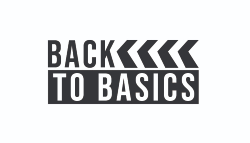Back to Basics: Selling Software
August 26, 2024
Blog

In our last article, we talked about licensing, open source, and how to protect your code. Now that we know how to properly open up our code to the world, it’s time to figure out how you could theoretically make a profit from it.
Welcome to Back to Basics, a series where we’re going to be reviewing basic engineering concepts that may require a more complex explanation than a quick Google search could provide.
 When it comes to software, the time investment that you’ve put in definitely exists, and while it is possible to burn your software on to discs or store it on flash drives or SD cards, it’s better to turn to a digital option.
When it comes to software, the time investment that you’ve put in definitely exists, and while it is possible to burn your software on to discs or store it on flash drives or SD cards, it’s better to turn to a digital option.
Make ‘em Want It
If you’ve been following Back to Basics for a while, you know we’re fans of asking ourselves questions to help make decisions. So our questions today are:
-
Do people want my software enough that they will pay for it?
-
How do they know about it in the first place?
To address our first question, our job is to tell people they want or need our software immediately. Our next order of business is to make sure they know about our product, and what differentiates ours from everyone else’s — whether it’s price point, quality, etc.
Software tends to fall into a few different marketable categories. While these terms are not technical, they help paint a picture of some of the things to look for as you try to find the value-add in your code.
-
Utility: Utility software helps users perform specific tasks. This can range anywhere from calculators to inventory management. When trying to sell utility software, the value is found in the ease with which it allows a user to perform a given task.
-
Entertainment: We all have seen entertainment software, whether it be the software we stream movies on or the games on our phones. Entertainment software has value from – you guessed it – being entertaining.
-
Quality of Life: This term applies to any software that adds value by making other software more user-friendly or efficient.
-
Embedded: Embedded software is usually behind the scenes, running on computers that people don’t think about, like the one in your car, clock, or microwave. Embedded software has value from being tight, efficient, and taking minimal space.
-
Web: If it lives on the internet, your code is probably under this umbrella. Web applications help direct user traffic to a desired location or task. Valuable web software is clean, clear, and able to withstand user interference.
While this list is not all-inclusive, it gives a sense of the different values that people look for in software. Figure out what value your software gives, and sell THAT!
Setting Up Shop
Now that you have an idea on how to market your software, you can move on to where you’ll be selling it.
-
Create an E-shop through a second party service. This makes the process of setting up and selling your idea simpler, takes care of secure payment, and lends some credibility to your software. The downside to this option is that you’d likely have to pay more for the service, thereby cutting into your profit margins
-
Use an online retailer. This gives your software a larger platform, gives credibility, and takes care of most of the job of selling it for you, but it also comes with royalties that you’d have to pay the retailer.
-
Create your own website to host your code. While this takes a bit of extra work, there are less fees that you would need to pay or royalties that would come with some of the previous options.
In the end, the choice is dependent on your preference and the resources you have available. You’re the mastermind behind your code, so sell it for all it’s worth!
ADDITIONAL RESOURCES:
Check out some more Back to Basics:
Learning a New Language, Software Edition (Obviously)
Back to Basics: Getting Connected to IoT





